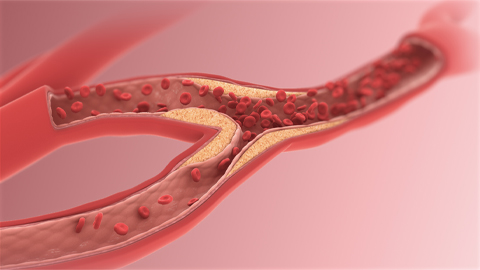Analyzing triglycerides in Americans of African ancestry
When genetic and environmental factors combine to cause high levels of fats, known as triglycerides, in the bloodstream, this is called hypertriglyceridemia. Researchers predict the condition impacts over 25% of all American adults, but most attempts to determine its genetic contributors have focused on patients of European ancestry, leaving research gaps for patients of other ethnicities.
High triglyceride levels increase the risk of cardiovascular and other diseases, including pancreatitis. Addressing underrepresentation among other racial and ethnic groups is essential to addressing inequities and improving diagnostics and health care.

A team of researchers in the medicine department at the Vanderbilt University Medical Center sought to address this knowledge gap by determining genetic risk factors for high triglyceride levels in American patients of African ancestry. Using the National Institutes of Health’s All Of Us database, they identified a cohort of patients based on ancestry, age and medical history, and grouped them based on hypertriglyceridemia severity.
The researchers searched for variants in genes involved in triglyceride metabolism and compared their occurrence in each of the groups. They used bioinformatics tools to predict which of these variants are likely to be functional, changing the protein product of the gene.
The team’s analyses confirmed that Americans of African ancestry with high triglyceride levels are more likely to carry certain genetic risk factors compared to those with normal levels. These factors include functional variants in regions encoding lipoprotein lipase, an essential enzyme in triglyceride breakdown, and apolipoprotein A5, a primary regulator of triglycerides in the blood, as well as other genetic factors.
According to QiPing Feng, an associate professor of medicine at Vanderbilt and corresponding author of the study, these findings, published recently in the Journal of Lipid Research, reinforce a genetic basis for hypertriglyceridemia.
“This will enable us both to identify patients at risk and to treat patients with high triglyceride levels to prevent cardiovascular disease,” Feng said.
The results are a crucial advance in hypertriglyceridemia research, but genetics do not seem to give the full picture.
“Even though we have screened several different categories of potential genetic factors, we still have around half of patients with high triglycerides for which we cannot identify any genetic factor,” Feng said.
This may be due to environmental factors such as stress.
The All Of Us depository includes genetic data, medical records and extensive questionnaires completed by patients. Feng’s team plans to use this data to research the contribution of environmental factors moving forward.
“We really appreciate both the program,” Feng said, “and the participants in All Of Us that agreed to donate their data for this kind of analysis.”
Enjoy reading ASBMB Today?
Become a member to receive the print edition four times a year and the digital edition monthly.
Learn moreGet the latest from ASBMB Today
Enter your email address, and we’ll send you a weekly email with recent articles, interviews and more.
Latest in Science
Science highlights or most popular articles

Mapping fentanyl’s cellular footprint
Using a new imaging method, researchers at State University of New York at Buffalo traced fentanyl’s effects inside brain immune cells, revealing how the drug alters lipid droplets, pointing to new paths for addiction diagnostics.

Designing life’s building blocks with AI
Tanja Kortemme, a professor at the University of California, San Francisco, will discuss her research using computational biology to engineer proteins at the 2026 ASBMB Annual Meeting.

Cholesterol as a novel biomarker for Fragile X syndrome
Researchers in Quebec identified lower levels of a brain cholesterol metabolite, 24-hydroxycholesterol, in patients with fragile X syndrome, a finding that could provide a simple blood-based biomarker for understanding and managing the condition.

How lipid metabolism shapes sperm development
Researchers at Hokkaido University identify the enzyme behind a key lipid in sperm development. The findings reveal how seminolipids shape sperm formation and may inform future diagnostics and treatments for male infertility.

Mass spec method captures proteins in native membranes
Yale scientists developed a mass spec protocol that keeps proteins in their native environment, detects intact protein complexes and tracks drug binding, offering a clearer view of membrane biology.

Laser-assisted cryoEM method preserves protein structure
University of Wisconsin–Madison researchers devised a method that prevents protein compaction during cryoEM prep, restoring natural structure for mass spec studies. The approach could expand high-resolution imaging to more complex protein systems.

